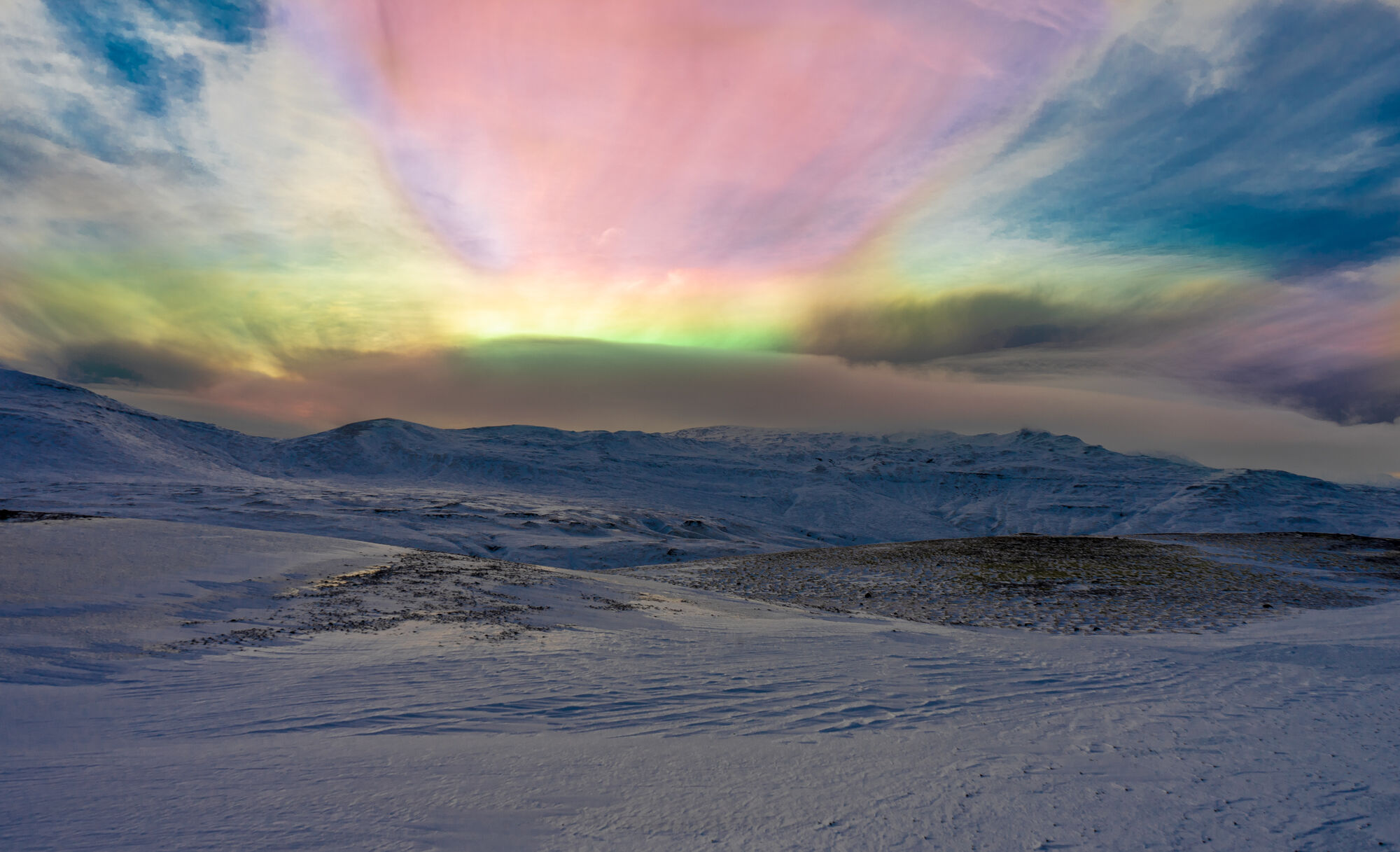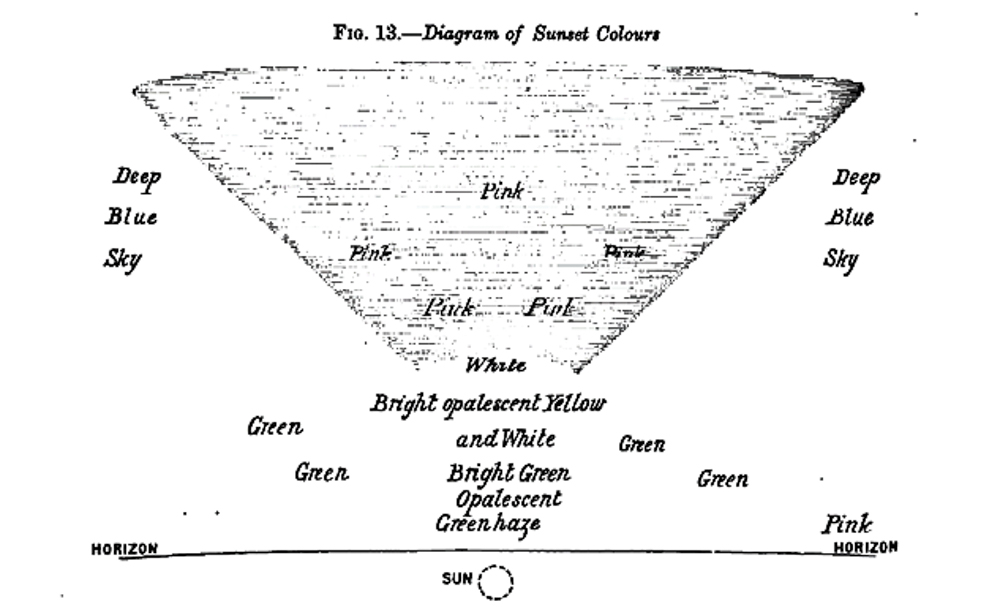Volcanic eruptions can be associated with major changes in the colour of the sky, especially at twilight. Strongly reddish and significantly longer lasting twilight colours near the horizon as well as distinctly purplish skies above are common. After the eruption of Krakatoa (Sunda Strait, Indonesia) in August 1883, there were numerous authentic eyewitness reports of green sunsets, which are extensively documented in the Royal Society's Krakatoa Report. Until now, there was no physical explanation for this extraordinary optical phenomenon.
The study that has now been published is the first to present a plausible explanation for the formation of green sunsets. Green sunsets can be explained by the occurrence of so-called anomalous light scattering from volcanic sulphate aerosols. In anomalous light scattering, it is not the blue components of sunlight that are predominantly scattered out of the rays, but instead the red components. Under suitable circumstances, this suppression of the red components can lead to a spectral maximum in the green range of the visible spectrum and produce a green impression on the visual senses.
Radiative transfer simulations were used to simulate the twilight colours for numerous combinations of relevant atmospheric parameters. The main requirements for the occurrence of green sunsets are a sufficiently large amount of volcanic sulphate aerosols in the stratosphere and comparatively large aerosol particles with a radius of 500-700 nanometres. The amount of stratospheric ozone plays an important role as well. The performed simulations also explain why green sunsets are a rare phenomenon: Volcanic eruptions with the required amount of stratospheric sulphate aerosols occur only about once a century. Another important result of the study is that the occurrence of green sunsets allows conclusions to be drawn about the size of the aerosol particles.
Further information
The research was carried out within the framework of the DFG Research Unit VolImpact (Volcanic impact on atmosphere and climate, FOR 2820), which is coordinated by the University of Greifswald’s Institute of Physics.
Publication
from Savigny, C., Lange, A., Hoffmann, C. G., and Rozanov, A.: Explaining the green volcanic sunsets after the 1883 eruption of Krakatoa, Atmos. Chem. Phys., 24, 2415–2422, Highlight paper / https://doi.org/10.5194/acp-24-2415-2024, 2024
Contact at the University of Greifswald
Prof. Dr. Christian von Savigny
Working Group Environmental Physics
Institute of Physics
Felix-Hausdorff-Straße 6, 17489 Greifswald
Tel.: +49 3834 420 4720
csavignyphysik.uni-greifswaldde
https://physik.uni-greifswald.de/ag-von-savigny/projects/dfg-research-unit-volimpact-for-2820/


